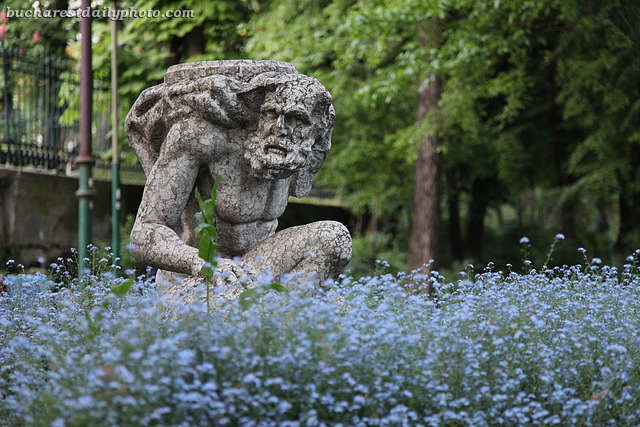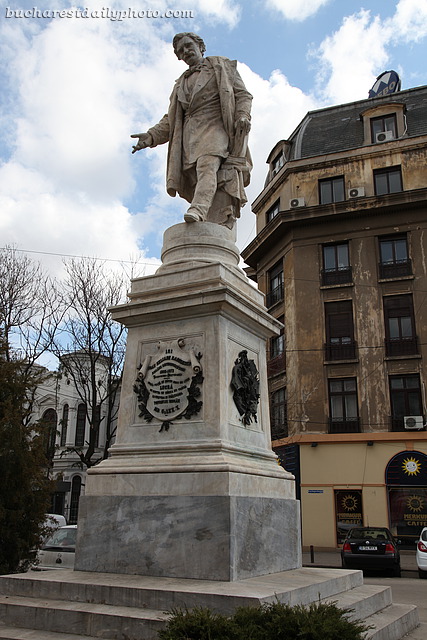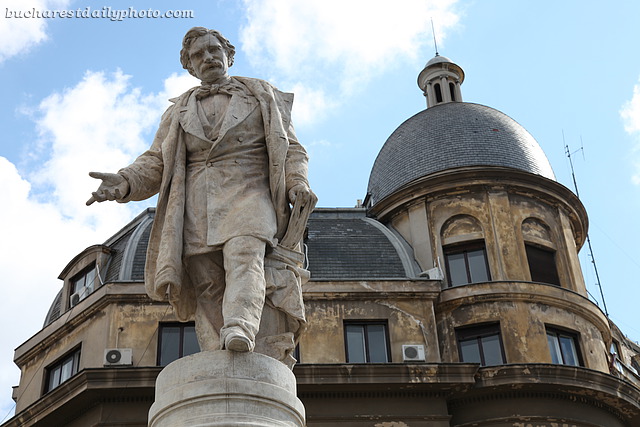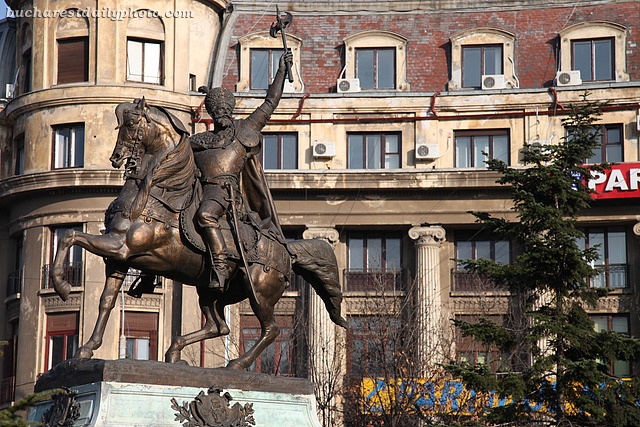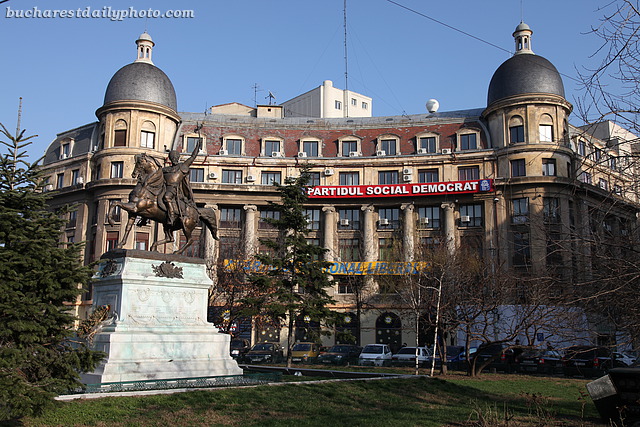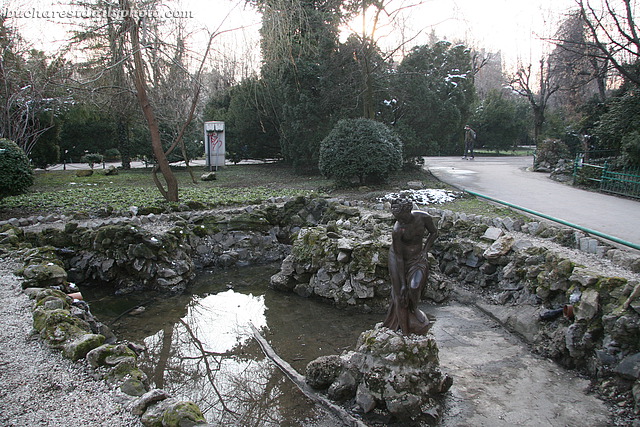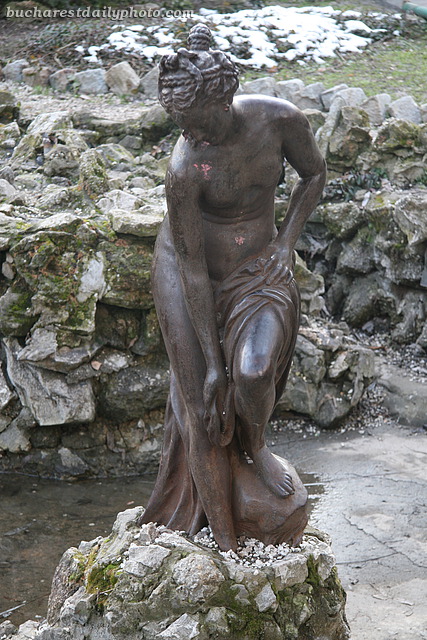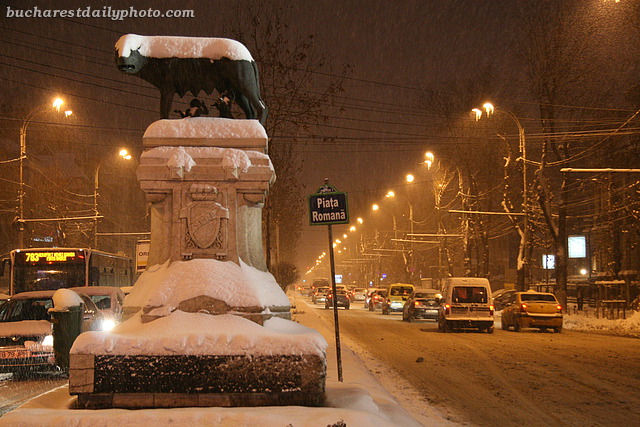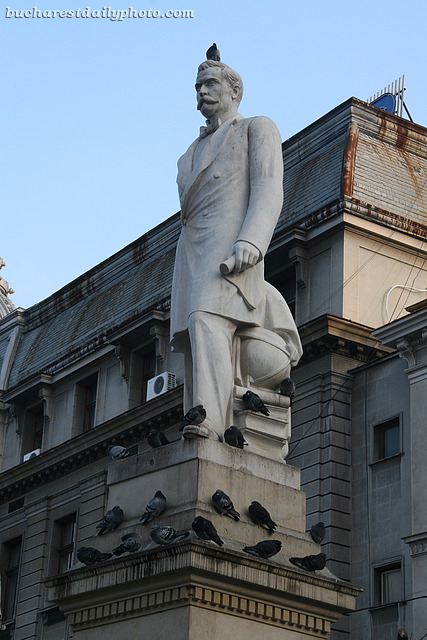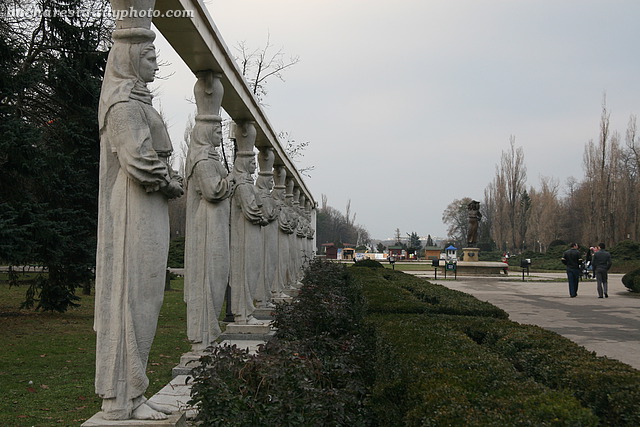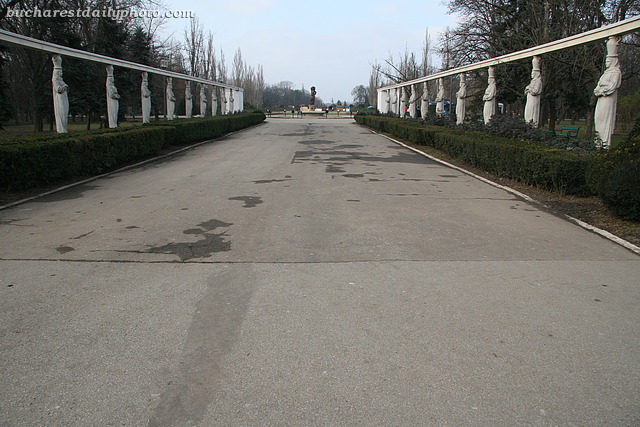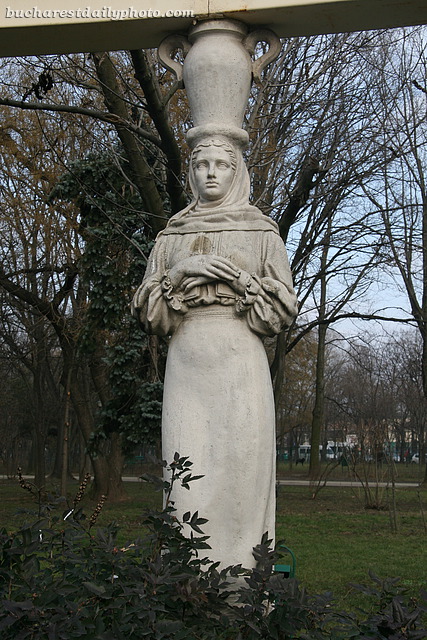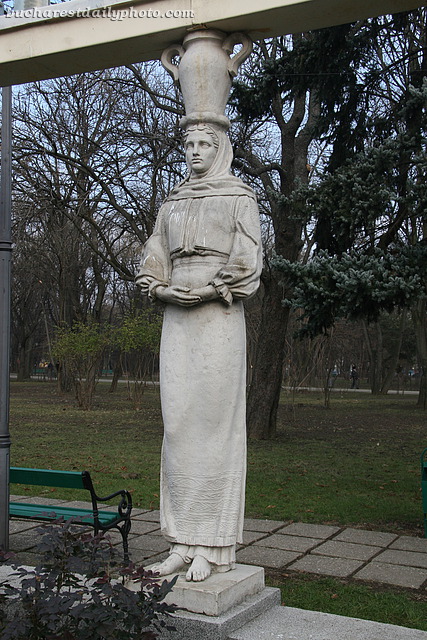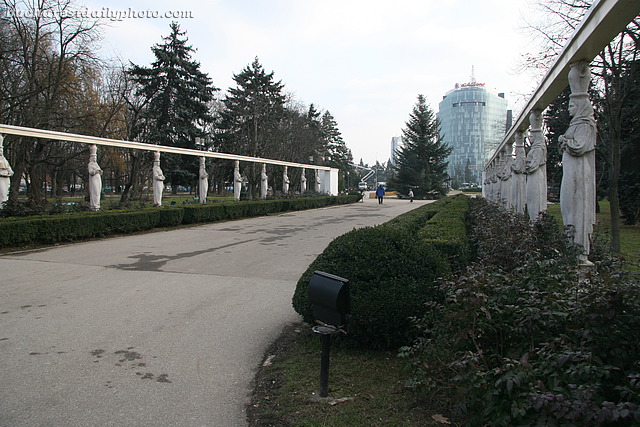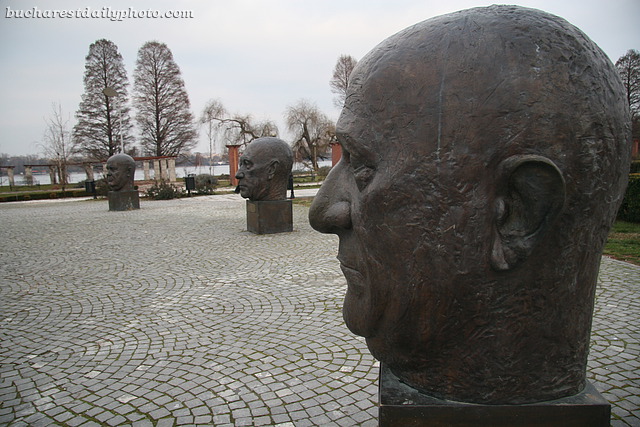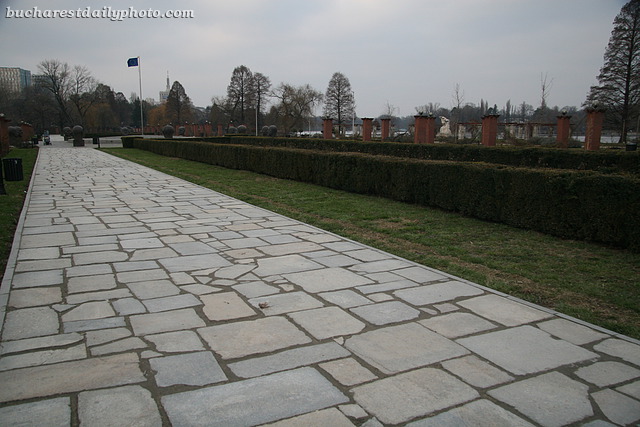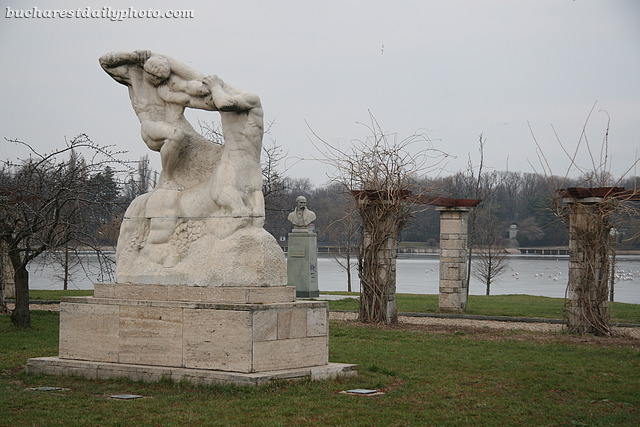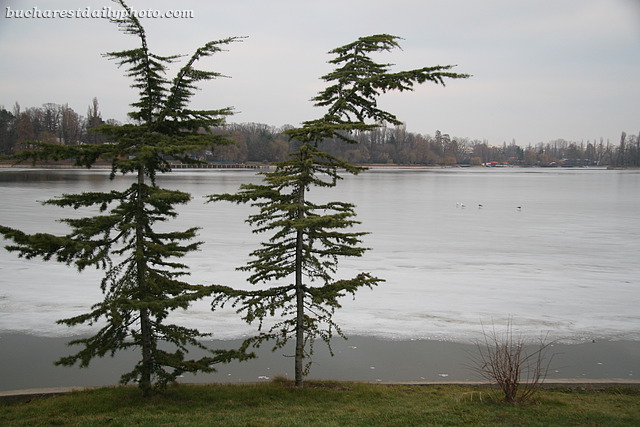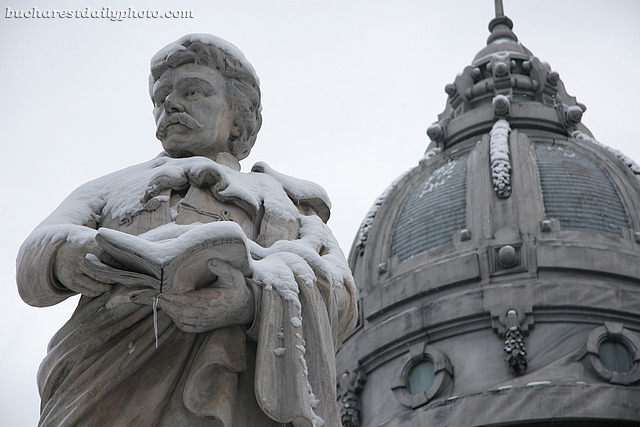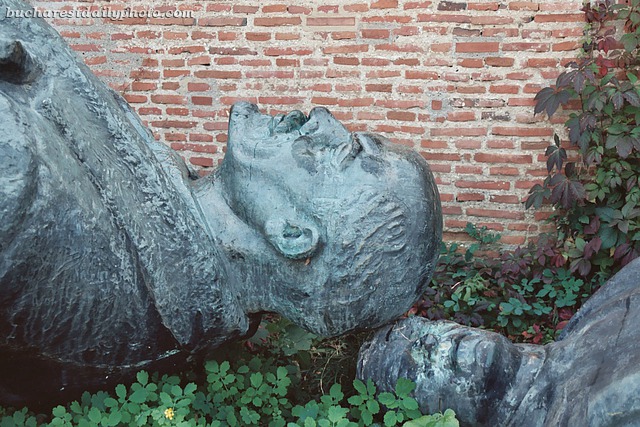Today is Theme Day at the City Daily Photo community, a monthly event that happens the first day of every month, when all participating blogs will post a picture that relates to the theme day’s description. Today’s theme is: Statues. Click here to view thumbnails for all participants
I had great plans for this theme day. I was to go and photograph some statues that would fit in both with theme day and with the May Day aka International Workers’ Day (which celebrates the legal establishment of the 8-hour working day, something that we today hold as a given but which wasn’t always so). I know a few statues in Bucharest that can be used to express both these ideas. But … I got stuck in the house with a bad cold so instead of what I planned I’m giving you Atlas, sitting among flowers in Cişmigiu Park. The only thing I’m not sure about is if this qualifies as a statue or it’s better defined as a sculpture.
